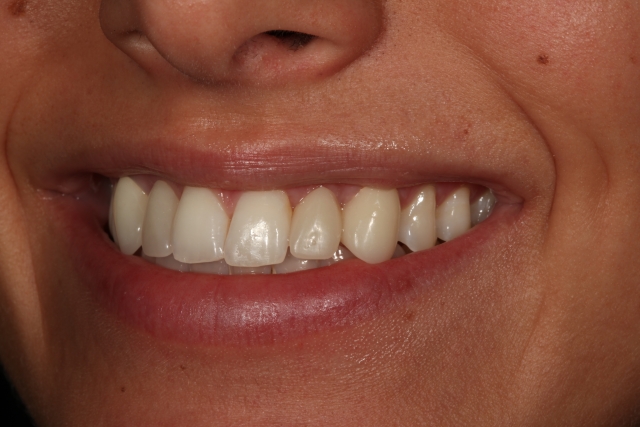How to Fix Bridge Pontics that Don't Match the Value of the Abutments
By Robert Winter on February 18, 2017 | 1 commentSolving Esthetic Dilemmas for Provisional Restorations: Part I
Have you ever made a maxillary anterior provisional bridge and the pontic was not acceptable from an esthetic perspective?

The provisional pontic frequently appears lower in value compared to the abutment teeth. This is true whether the provisional is made of bisacryl or PMMA materials.
There are two reasons this occurs:
- The provisional material thickness is significantly different between the units of the bridge. The material is relatively thin on the abutment teeth and thick for the pontic.
- There is provisional cement used on the abutment tooth, which is typically opaque and high in value (bright).
The combination of thin, provisional material and high-value cement make the appearance of the final cemented bridge abutment higher in value and more opaque relative to the pontic, which has no cement and thicker material.

If this problem occurs, follow these simple steps to achieve the desired esthetic outcome.
- Grind out the inside of the pontic with a carbide bur (Brasseler H390E 016 and H139EF 023).
- Access the inside through the tissue side of the pontic.
- The facial aspect of the pontic should be thinned to the same thickness of the abutment.
- Air abrade the surface with 50-micron aluminum oxide at 20-40 psi at a distance of 1.0 cm.
- Clean the surface with an air-water spray or in an ultrasonic using water.
- Apply two coats of dental adhesive, light curing only the first application.
- I use 3M Single Bond Pus or Ivoclar-Vivadent Adhese Universal.
- Place an opaque high-value composite resin into the hole that has been created. In this case, Tokuyoma Estelite Omega Bleach 1 was used.
- Trim to the desired ovate pontic design with the green rubber wheel shaper (Brasseler RW GPP) or similar.
- Polish the surface with the pink rubber polisher (Brasseler RW PPP) or similar.

By following this simple technique, you will find there is a significant improvement in the esthetic match of all units in an anterior provisional bridge.

(Click this link to read more dentistry articles by Dr. Bob Winter.)
Bob Winter, D.D.S., Spear Faculty and Contributing Author
Comments
July 10th, 2020